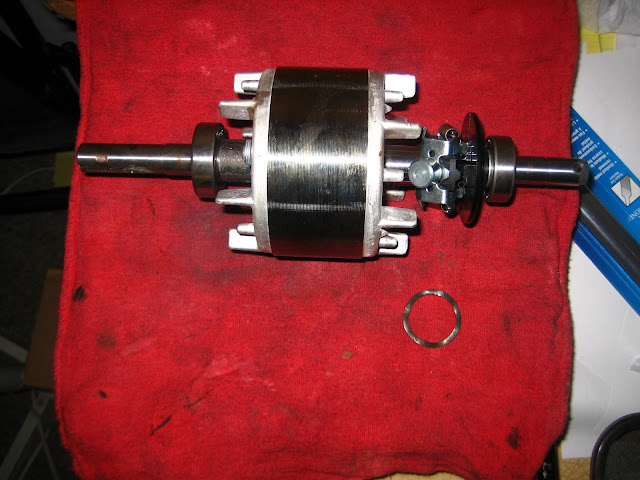cooncatbob
Hot Rolled
- Joined
- Jul 10, 2006
- Location
- Carmichael, Calif.
A few months ago I replaced the original Dayton 1/2 hp drip proof motor with a
1/2 hp WEG TEFC motor that I bought NOS off e-bay.
Recently I've developed what at first I thought was a drive train noise, but I've isolated it to the bearing on the pulley end of the motor.
When I lessen the tension on the vee-belt the noise lessened but I'm afraid it will eventually get worse and fail.
I've used a probe stethoscope and the noise is definitely coming from the bearing.
How difficult is it to change the bearing?
It looks like I can take the fan cover off, undo the 4 long bolts, remove the pulley and the end of the motor housing with the offending bearing.
How difficult is the bearing to remove from the housing?
I live in Sacramento, CA. and there's a bearing supply place in the phone book.


1/2 hp WEG TEFC motor that I bought NOS off e-bay.
Recently I've developed what at first I thought was a drive train noise, but I've isolated it to the bearing on the pulley end of the motor.
When I lessen the tension on the vee-belt the noise lessened but I'm afraid it will eventually get worse and fail.
I've used a probe stethoscope and the noise is definitely coming from the bearing.
How difficult is it to change the bearing?
It looks like I can take the fan cover off, undo the 4 long bolts, remove the pulley and the end of the motor housing with the offending bearing.
How difficult is the bearing to remove from the housing?
I live in Sacramento, CA. and there's a bearing supply place in the phone book.




